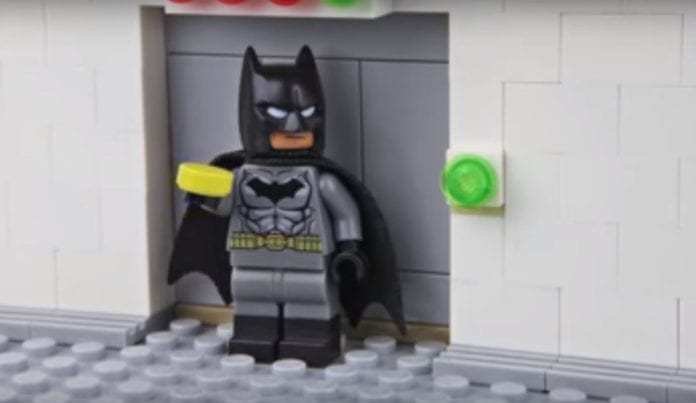A factory in Billund, Denmark, uses autonomous robots and precision machines to make 36,000 Lego pieces per minute, or 2.16 million pieces every hour. In fact, according to Gizmodo, the factory’s recent totals reach 1,140 units per second, or 36 billion per year.
This Bloomberg Business video shows a tour of some of the automated factory features:
Forming the mixture
The process starts in the half-kilometer-long warehouse where silos hold raw plastic granulates. The silos process 60 tons of material every 24 hours and are connected to molding machines that use a series of pipes to push the granulate mixture – a diesel byproduct – into a permanent tin-pitched rumble.
All of the basic Lego elements start out as plastic granules composed primarily of acrylonitrile butadiene styrene – material Lego is trying to get away from. A highly automated injection molding process turns these granules into recognizable bricks. The making of a Lego brick requires very high temperatures and enormous pieces of equipment, so machines, rather than people, handle most of their creation.
When the ABS granules arrive at Lego manufacturing facilities, they’re vacuumed into several storage silos. The average Lego plant has about 14 silos, and each can hold 33 tons of ABS granules. When production begins, the granules travel through tubes to the injection molding machines. The machines use very accurate molds with a precision tolerance as little as 0.002 millimeters.

The machines melt the granules at temperatures of up to 450 degrees Fahrenheit, inject the melted ABS into molds and apply between 25 and 150 tons of pressure. After about seven seconds, the new Lego pieces cool and fall onto a conveyor. At the end of the conveyor, they fall into a bin.
When the bin fills, the molding machine signals a robot to pick it up and carry it to an assembly hall. In the Billund factory, eight robots move 600 bins of elements per hour. In the assembly hall, machines stamp designs onto bricks and assemble components that require multiple pieces. The machines assemble the components by applying precise amounts of pressure to specific parts.
Roaming robots
The molding machines produce more than 2 million pieces per hour, creating color- and bar-coded boxes that go through a series of quality testing.
Transport robots roam around answering the call of the central mainframes – the brain of the Lego body – that control every aspect of the process at all times. If the mainframes stop the production of the machine, a signal is sent from a sensor to the robot, alerting it to harvest the crop of bricks. The robot then travels down the aisles autonomously, picking up boxes and leaving empty ones so production can resume.
Robots, conveyors and towers of boxes

The robots then put the boxes on conveyors, which move them into the storage areas. There, the cranebots lift them and place them in towers of boxes. There are four of these storage areas in the Lego factory, and no humans are inside, said Gizmodo. The mainframes know what is inside at all times and order the cranebots to retrieve boxes and send them to decoration and packaging, where Lego sets take their final form.
Completing the childhood memory
The Lego brick storage buildings are where Lego pieces go one of two ways: straight to the packaging lines or into decoration. Decoration is the most expensive part of the Lego process, according to Gizmodo, as that is where pieces are painted with incredible precision by machines.

In the packaging lines the pieces are distributed by dumping them into the machine, which separates them one by one and counts them using optical sensors before placing them in a generic small box.
Along the way, high-precision scales measure the weight of the box. The computers know exactly how much a box has to weigh at any stage, indicating that the correct number and kind of pieces are inside. If there’s a variation of a few micrograms the alarm signals and an operator grabs the box, sorts the pieces, and puts it back into production.
Once the box is complete the contents are dropped into the plastic wrapping machine, which makes a bag with the pieces inside. The box is then dropped inside another box and passed to another production line, where more bags are added until all the set pieces are in place, ready to be packaged and sent to shops all around the world.

